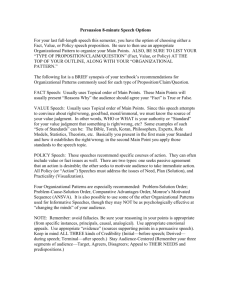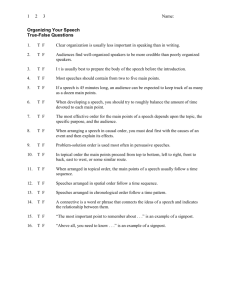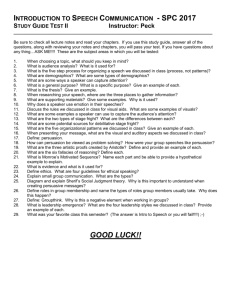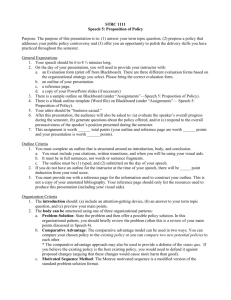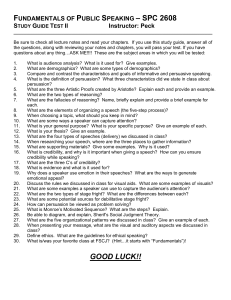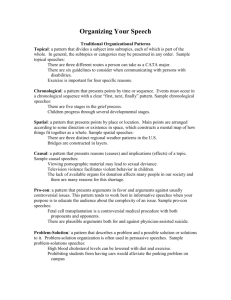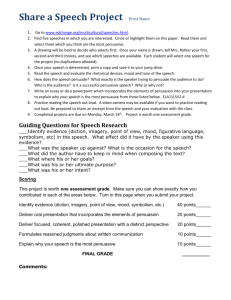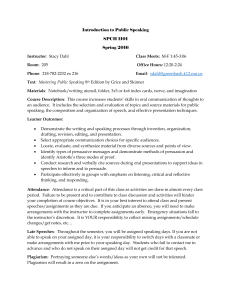Final Persuasion Options
advertisement
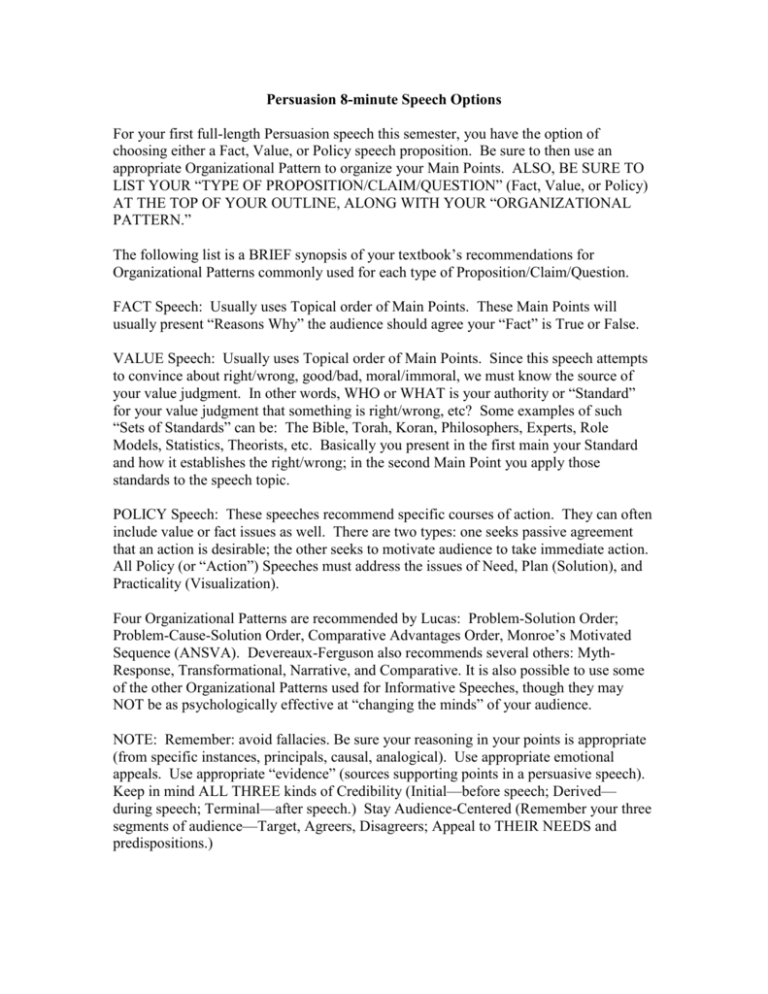
Persuasion 8-minute Speech Options For your first full-length Persuasion speech this semester, you have the option of choosing either a Fact, Value, or Policy speech proposition. Be sure to then use an appropriate Organizational Pattern to organize your Main Points. ALSO, BE SURE TO LIST YOUR “TYPE OF PROPOSITION/CLAIM/QUESTION” (Fact, Value, or Policy) AT THE TOP OF YOUR OUTLINE, ALONG WITH YOUR “ORGANIZATIONAL PATTERN.” The following list is a BRIEF synopsis of your textbook’s recommendations for Organizational Patterns commonly used for each type of Proposition/Claim/Question. FACT Speech: Usually uses Topical order of Main Points. These Main Points will usually present “Reasons Why” the audience should agree your “Fact” is True or False. VALUE Speech: Usually uses Topical order of Main Points. Since this speech attempts to convince about right/wrong, good/bad, moral/immoral, we must know the source of your value judgment. In other words, WHO or WHAT is your authority or “Standard” for your value judgment that something is right/wrong, etc? Some examples of such “Sets of Standards” can be: The Bible, Torah, Koran, Philosophers, Experts, Role Models, Statistics, Theorists, etc. Basically you present in the first main your Standard and how it establishes the right/wrong; in the second Main Point you apply those standards to the speech topic. POLICY Speech: These speeches recommend specific courses of action. They can often include value or fact issues as well. There are two types: one seeks passive agreement that an action is desirable; the other seeks to motivate audience to take immediate action. All Policy (or “Action”) Speeches must address the issues of Need, Plan (Solution), and Practicality (Visualization). Four Organizational Patterns are recommended by Lucas: Problem-Solution Order; Problem-Cause-Solution Order, Comparative Advantages Order, Monroe’s Motivated Sequence (ANSVA). Devereaux-Ferguson also recommends several others: MythResponse, Transformational, Narrative, and Comparative. It is also possible to use some of the other Organizational Patterns used for Informative Speeches, though they may NOT be as psychologically effective at “changing the minds” of your audience. NOTE: Remember: avoid fallacies. Be sure your reasoning in your points is appropriate (from specific instances, principals, causal, analogical). Use appropriate emotional appeals. Use appropriate “evidence” (sources supporting points in a persuasive speech). Keep in mind ALL THREE kinds of Credibility (Initial—before speech; Derived— during speech; Terminal—after speech.) Stay Audience-Centered (Remember your three segments of audience—Target, Agreers, Disagreers; Appeal to THEIR NEEDS and predispositions.)
